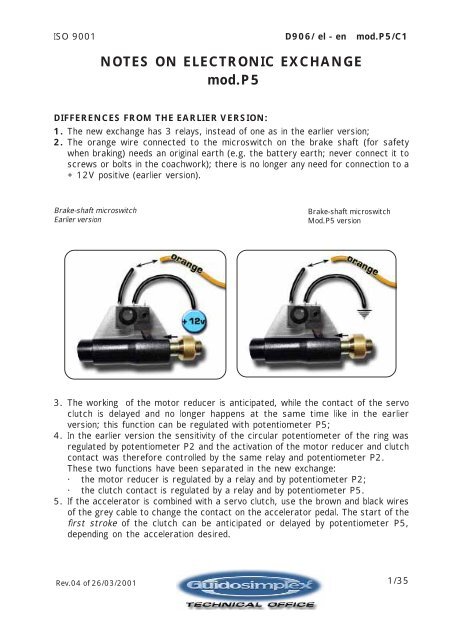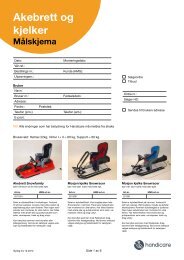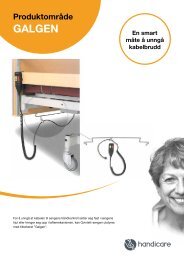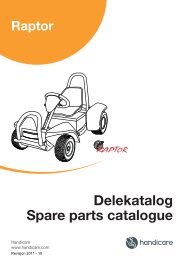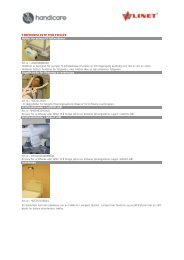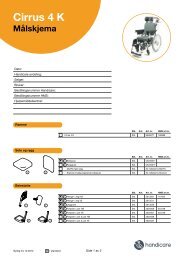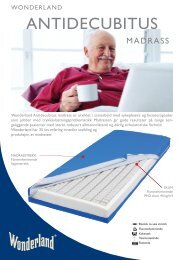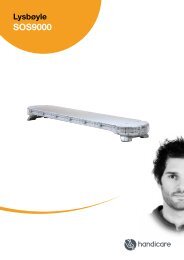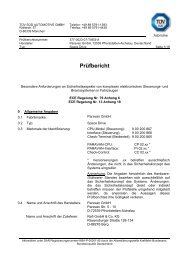1. - Handicare
1. - Handicare
1. - Handicare
Create successful ePaper yourself
Turn your PDF publications into a flip-book with our unique Google optimized e-Paper software.
ISO 9001 D906/ el - en mod.P5/C1<br />
NOTES ON ELECTRONIC EXCHANGE<br />
mod.P5<br />
DIFFERENCES FROM THE EARLIER VERSION:<br />
<strong>1.</strong> The new exchange has 3 relays, instead of one as in the earlier version;<br />
2. The orange wire connected to the microswitch on the brake shaft (for safety<br />
when braking) needs an original earth (e.g. the battery earth; never connect it to<br />
screws or bolts in the coachwork); there is no longer any need for connection to a<br />
+12V positive (earlier version).<br />
Brake-shaft microswitch<br />
Earlier version<br />
Brake-shaft microswitch<br />
Mod.P5 version<br />
3. The working of the motor reducer is anticipated, while the contact of the servo<br />
clutch is delayed and no longer happens at the same time like in the earlier<br />
version; this function can be regulated with potentiometer P5;<br />
4. In the earlier version the sensitivity of the circular potentiometer of the ring was<br />
regulated by potentiometer P2 and the activation of the motor reducer and clutch<br />
contact was therefore controlled by the same relay and potentiometer P2.<br />
These two functions have been separated in the new exchange:<br />
· the motor reducer is regulated by a relay and by potentiometer P2;<br />
· the clutch contact is regulated by a relay and by potentiometer P5.<br />
5. If the accelerator is combined with a servo clutch, use the brown and black wires<br />
of the grey cable to change the contact on the accelerator pedal. The start of the<br />
first stroke of the clutch can be anticipated or delayed by potentiometer P5,<br />
depending on the acceleration desired.<br />
Rev.04 of 26/03/2001 1/35


